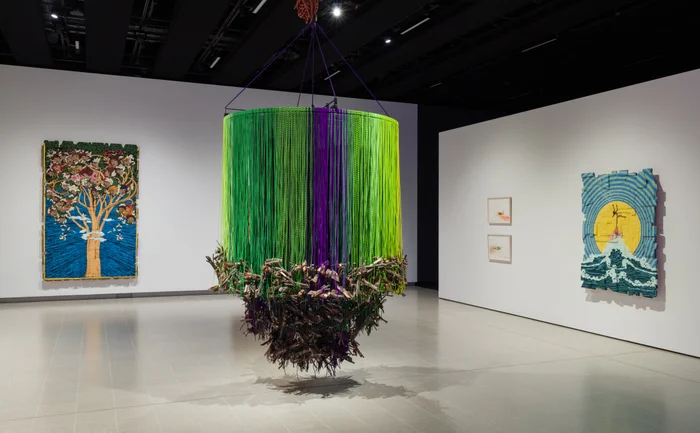By: Sandy Wang
Every year in New Orleans, there is a dawn ritual performed during Mardi Gras, which can be any Tuesday from February 3 to March 9. Dating back to more than 200 years ago, members of the North Side Skull and Bone Gang wear black and white skeleton suits and papier-mâché masks. They summon their ancestors by using drums and bells, awakening the whole city at the same time.
To artist and activist Imani Jacqueline Brown, this ritual carries a significant meaning. “They’re breaching the divide between the world of spirits and the world of the living,” she said, according to The New York Times. “They are singing to us that we’ve got to live today because tomorrow we might die.”
Thirty-six-year-old Brown grew up in New Orleans and lives in London now as a member of the research and visual investigations group Forensic Architecture. Recently, she created an exhibition that is being displayed at Storefront for Art and Architecture in Manhattan. The exhibition, called “Gulf,” with a strikethrough, focuses on the impact the oil and gas industry makes on South Louisiana. It also contains poetry and spiritual aspects inspired by New Orleans’s culture.
“I wanted to demystify oil and gas production,” Brown said in an interview after the show’s opening. “The voice you need to adopt in order to communicate this information needs to be clear, but without losing the sense of poetry.”
“Gulf” has several themes, including infrastructure and multinational corporate power. On one wall of the gallery, there is a hand-painted map of South Louisiana’s oil and gas wells, dredging canals, and pipelines. Brown used the information on this diagram to create an online platform called “Follow the Oil.” This allowed everyone to see the map which hasn’t been publicly available since 2021. Another wall is taken up entirely by a collage that includes pamphlets and news articles about oil extraction in Louisiana and Angola from 1950 to 1975.
Brown’s goal for creating this exhibit is for people to recognize the harm they are doing to the environment and encourage them to change that and restore nature. As she said in a New York Times article, “We humans are able to look back across these great leaps of time and recognize the catastrophe that we are producing, and that we can also organize against. And maybe we should choose to do that.”
Link to Article: https://www.nytimes.com/2024/08/13/arts/design/imani-jacqueline-brown-storefront-art-architecture.html











